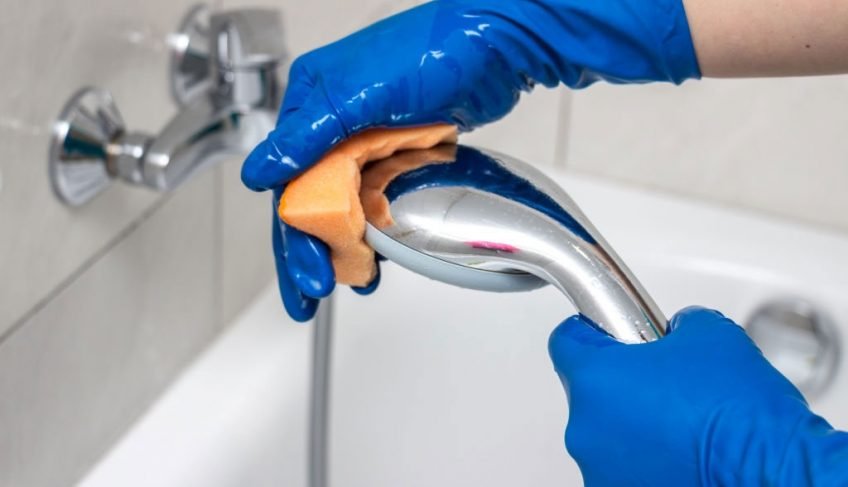We all enjoy a relaxing shower in the evening or an energising one in the morning. However, there might be something lurking in the background.
When was the last time you cleaned your shower head? It’s probably been a while, right? If your shower head has been neglected for a long time, mineral deposits and limescale may have built up inside it, causing weak flow or water spraying in every direction but down. Not to mention the bacteria that may be thriving there, too.
So, if you:
- Haven’t cleaned your shower head in a while;
- Want to know how to clean removable shower heads;
- Are looking for a way to clean your fixed shower head,
Then look no further! This post has the answers.
How to clean a handheld shower head
If your shower head is removable, you can deep clean it by taking it off its pipe or hose. So, here is how to remove limescale from a shower head:
What you need: distilled white vinegar, a plastic container, an old toothbrush, a soft cloth
Time needed: 1 hour.
- Remove the shower head.Take the shower head off the pipe or hose. If you find a rubber washer, keep it somewhere safe, as you will need to put it back afterwards to prevent leaks.
- Fill the container with white vinegar.Take your plastic container and fill it with white vinegar, enough to cover the whole item.
- Place the shower head inside.Put the shower head inside the plastic container, fully submerging it in the vinegar.
- Let it sit.Let the shower head soak for 30 minutes, or overnight, depending on how heavily soiled it is.
- Rinse.Take the shower head out of the vinegar and rinse it with tap water.
- Run water through it.Run tap water through the inside of the shower head to loosen and remove any stuck-on mineral deposits.
- Scrub nozzles.Scrub the nozzles with an old toothbrush to remove any stuck-on limescale.
- Polish.Polish the shower head with a soft, dry cloth.
- Reattach.Place the shower head back on the hose or pipe, putting back the rubber washer, as well.
- Run water through.Run clean water through for at least 30 seconds to completely rinse the inside of vinegar and limescale.
If your shower head is brass, gold or nickel-plated, do not leave it soaking in the vinegar for more than 30 minutes – it could damage the finish.
How to clean a fixed shower head
If your shower head is mounted and difficult to remove, you can still clean it using the same method. The only difference is you’ll need to attach a bag full of vinegar to it, instead of submerging it in a container.
What you need: Distilled white vinegar, a plastic bag, string or a rubber band, a soft cloth, an old toothbrush
- Fill a plastic bag with vinegar.
Take the plastic bag and fill it halfway with white vinegar. Be careful not to overfill it, as it may spill out when you submerge the shower head. - Place around the shower head.
Attach the bag to the shower head, submerging it in the vinegar and securing the bag with a rubber band, string, duct tape or anything else you can use. Let go of the bag slowly and make sure it won’t fall off in the process. - Let it sit.
Leave the bag on for 30 minutes, or overnight. - Take it off.
Take the bag off the shower head and tip it into the drain. - Run water through.
Run clean water through the shower head for at least 30 seconds. - Wipe.
Wipe the shower head clean with a damp rag. - Scrub nozzles.
Scrub the nozzles with an old toothbrush. - Polish.
Polish the shower head with a soft, dry cloth.
How often should you clean your shower head?
Experts recommend that you clean your shower head at least once a month. However, if you live in an area with hard water, you may need to do this weekly, as limescale will build up quicker.
No time to clean your bathroom?
If cleaning your shower head or bathroom is not how you want to spend an afternoon, you can always rely on the professionals. Shining Oven offers you a bathroom cleaning service, performed by insured and experienced cleaners. You can sit back and relax while they tackle any cleaning chores for you.
Our cleaning service is sure to leave your home sparkling! Booking is easy – just use our simple online form and choose a time that suits your schedule.






